Burgundy – unknown neighbor
Who does not know it – the Dijon mustard? Probably everyone! But where exactly is Dijon? Dijon is the capital of the eastern French region of Burgundy. It is easy to reach by car from Germany. But for us Germans, the most popular destinations are Alsace, Normandy, Provence or Brittany. Burgundy has much to offer and it is not only the famous Burgundy wines, historic wineries, the rolling hills and the historic cities that make a trip worthwhile. On our culinary journey, we stop in the beautiful city of Beaune.
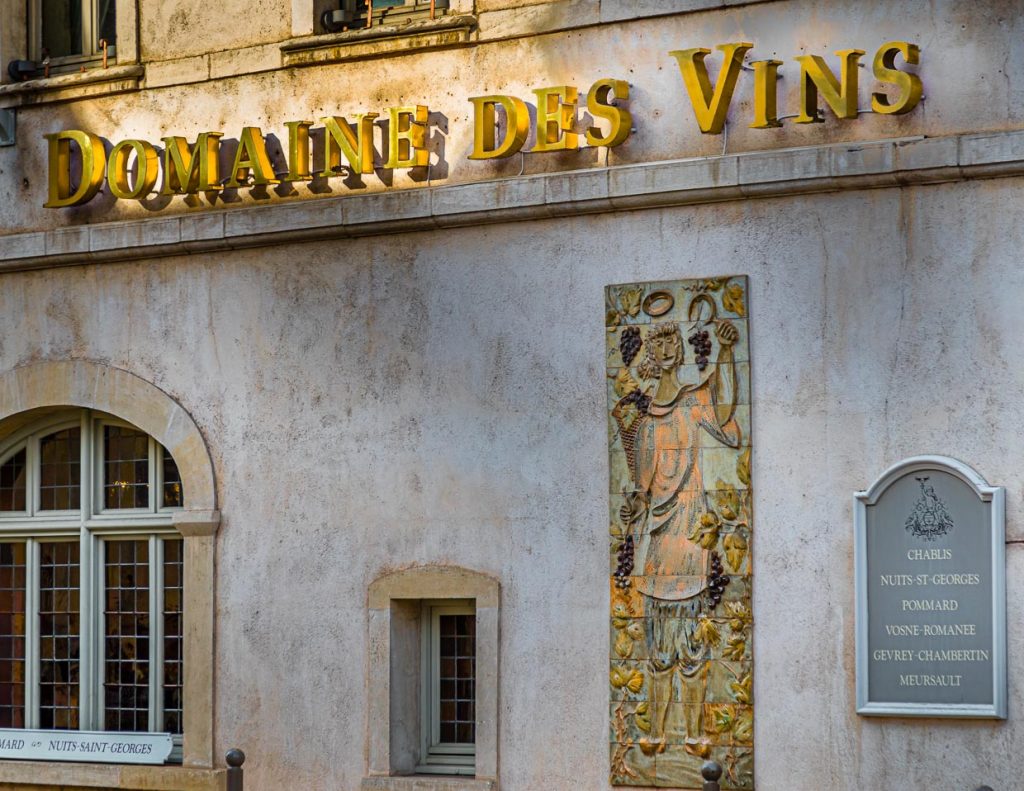
How Dijon mustard lost its home
The small front building on Rue du Farbourg Bretonniere in Beaune doesn’t make it seem as if some 45,000 visitors a year pass through the gate into the courtyard behind it. But anyone who knows that they are entering one of the oldest mustard factories in France will immediately notice the spicy aroma of ground mustard seeds. Along the courtyard entrance, the growth stages of the mustard plant are painted on the walls. The educational concept of the Moutarderie Edmond Fallot still has potential for improvement. During a visit to the running production facility, the visitor becomes a bit of a mustard seed himself.
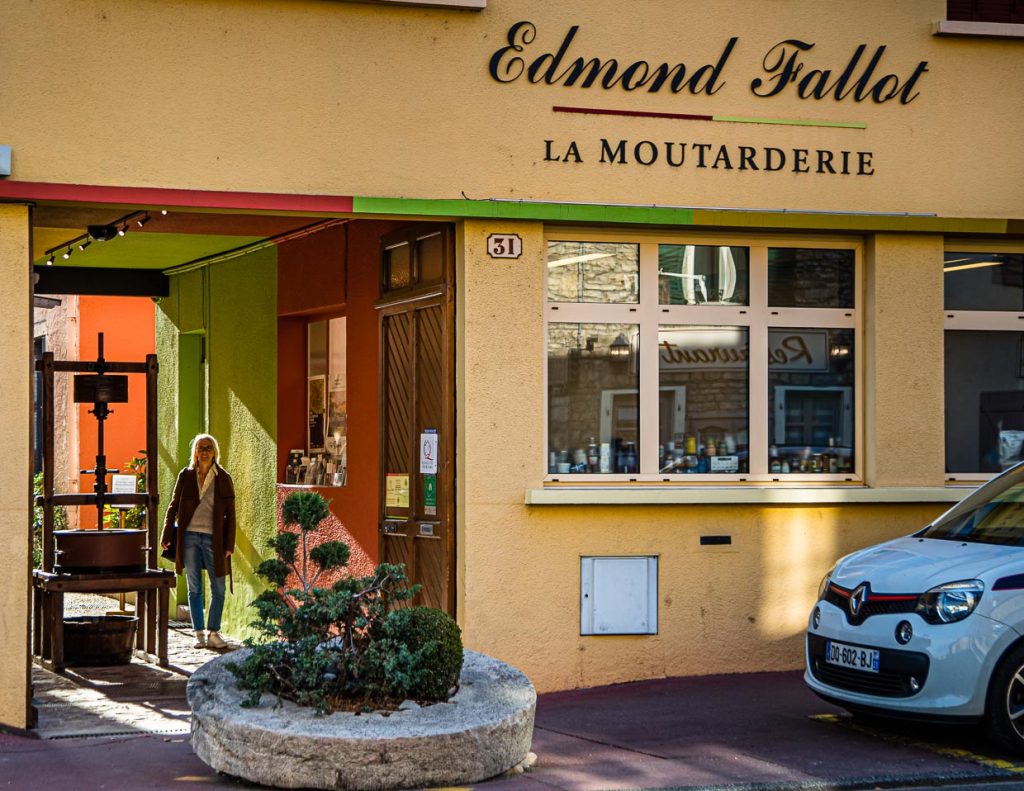
But not only the production but also the history of Dijon mustard is exciting. The first mention of Dijon mustard dates back to the 13th century. The mustard is spicy and is made exclusively from brown or black mustard seeds, which are not de-oiled and are ground cold. This gives the mustard its intense flavor. In 1937, a legal dispute between mustard producers from Paris and Dijon ended regional protection of origin by a judge’s decision.
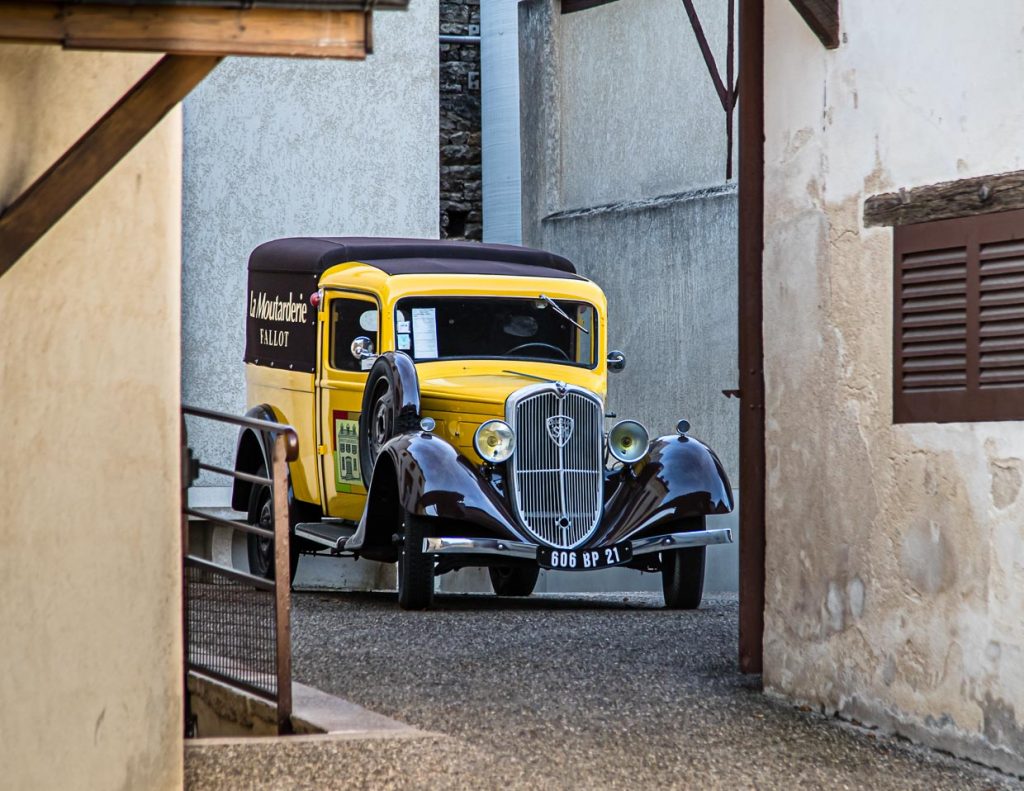
From then on, the designation Dijon mustard is no longer tied to the place, but only to the recipe. Globalization takes its course. Major French brands such as Amora Maille are bought by the food giant Unilever. Dijon’s last mustard factory closes in 2009, with production facilities relocated to Eastern Europe and mustard seeds purchased in Canada. Dijon is now only on the label, serving customers with the illusion of French cooking finesse.
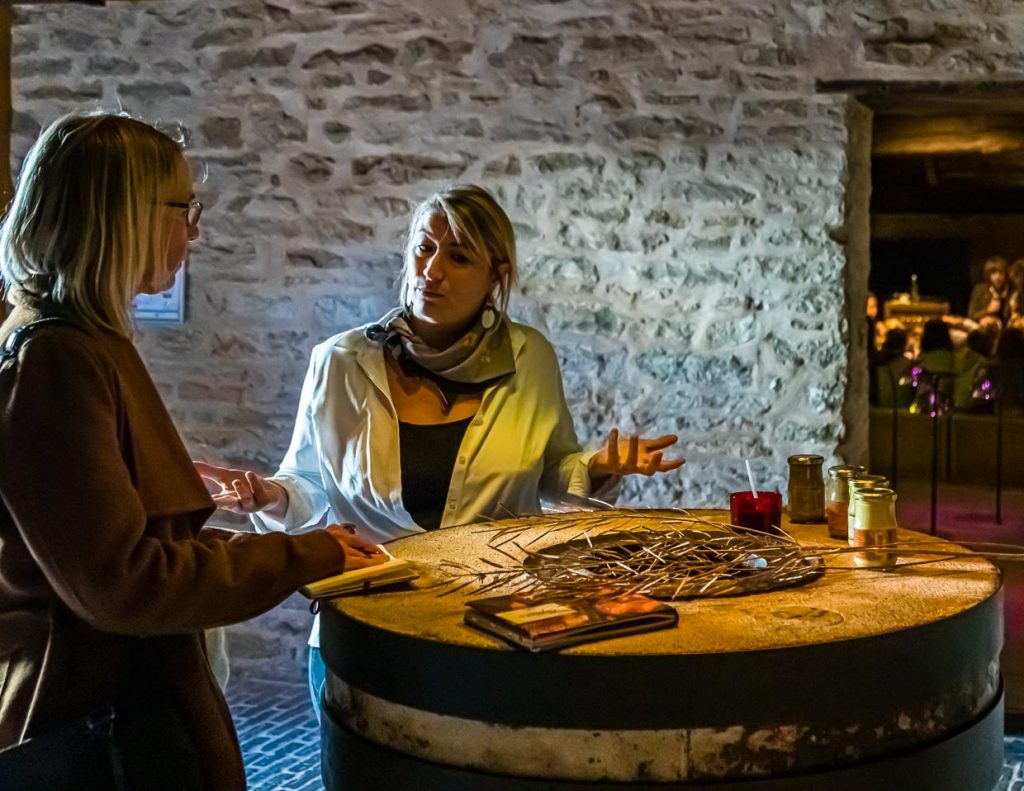
A class of elementary school students moves past us, chattering happily, into the small mustard museum in the back of the building. Edmond Fallot is the only remaining family-owned mustard company in France. And here we are already in the middle of the dilemma of a world-famous product. Caroline Riboteau explains that any producer in the world can sell Dijon mustard, as long as they stick to the recipe currently in force. At 90,000 tons a year, the French consume twice as much mustard as the Germans. A Frenchman even speaks only of Dijon when he means mustard and then consumes mostly a purely foreign product.
Reclaiming regional identity
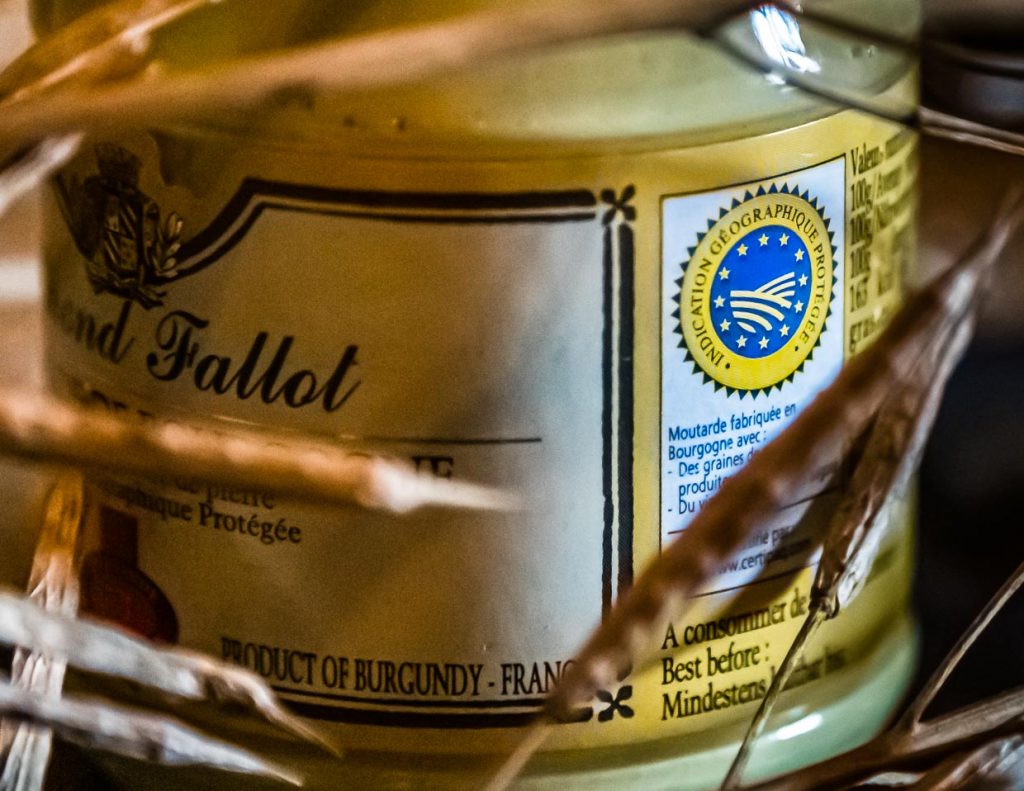
For several years, Moutarderie Edmond Fallot has been steering against globalization. Fallot also exports worldwide, is a popular brand in the U.S. and Asia, top chefs appreciate the high quality, and even Paul Bocuse once raved about Fallot’s skills. For several years, however, the company has also been working to reclaim a regional identity. 2019 will be the first year in which production can rely 100 percent on dark mustard seeds from France. The cultivation areas had to be built up over years and an additional purchase from Canada was unavoidable until 2018, explains Caroline Riboteau.
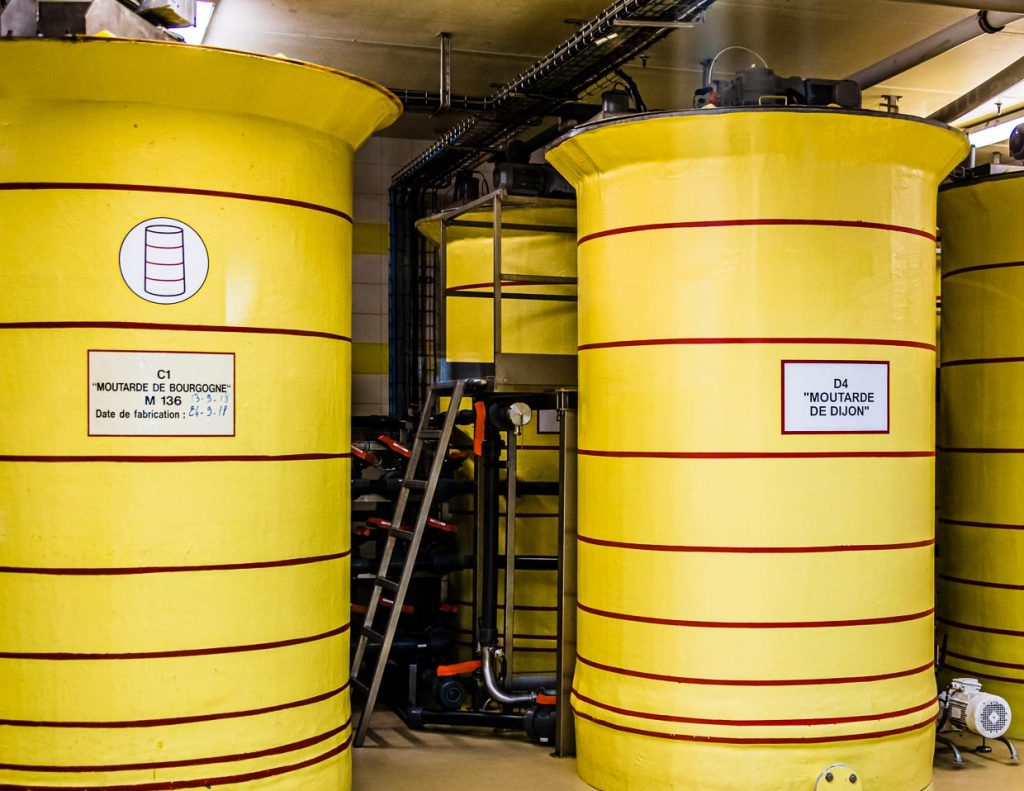
The brand La Moutarde de Bourgogne the mustard from Burgundy is also 100 percent from Burgundy. This mustard is produced with Aligoté, a white wine from Burgundy instead of vinegar. This makes it creamier and more delicate in flavor, but also makes it less durable. Using wine instead of vinegar is also a nod to the original recipe of early Dijon mustard. This was made with verjus, the juice from unripe grapes. But this recipe was ended by the great phylloxera plague that hit hard all of Europe, and France in particular, in the late 19th century. France lost up to 75 percent of its wine production during the decades of the plague. Grapes, if they still grew, were not wasted on verjus and so vinegar was added to mustard. Thus, the phylloxera plague not only spelled the end of many winemakers, but also influenced the production of the traditional mustard variety from Burgundy.
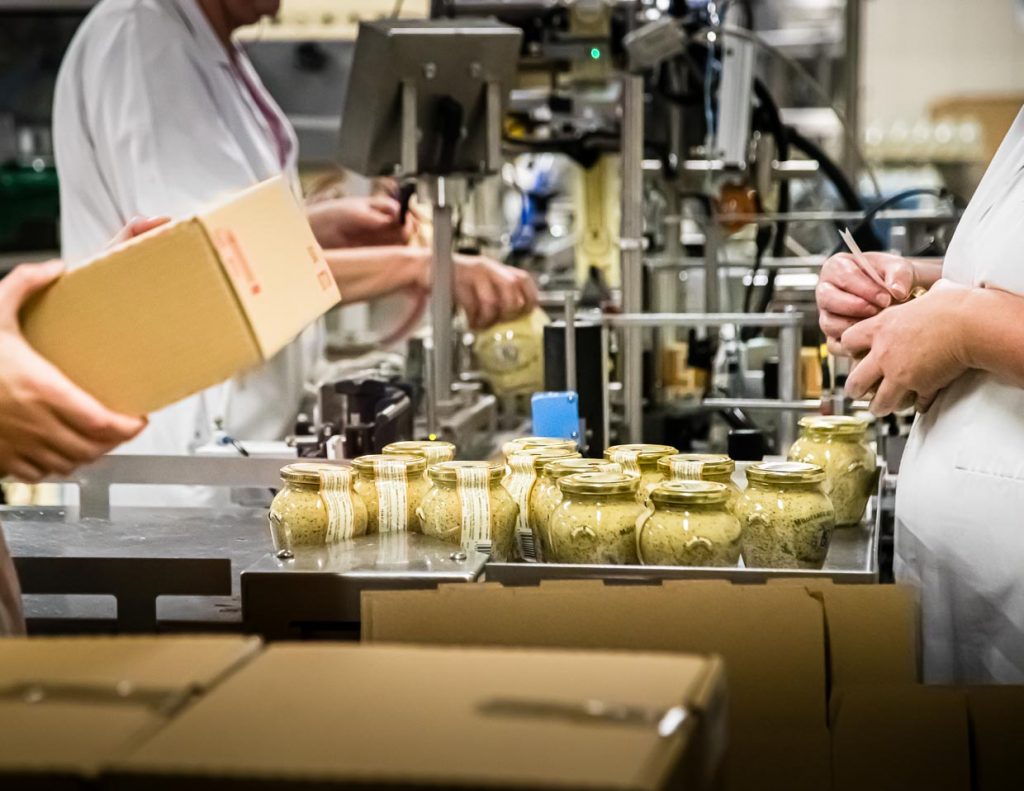
Burgundy to the power of two – the combination of specialties
Edmond Fallot’s current range also includes many flavored mustards. Particularly noteworthy are two grainy mustards, each containing another Burgundy specialty. One is Cassis, the black currant and Pain d’Epices variety, the gingerbread spices give the mustard a nice anise note.
However, the most noble refinement of mustard is the addition of truffles from Burgundy. The brown Burgundy truffle grows just outside the city of Beaune. Truffle mustard, a high-quality product for gourmets, is produced from the very local cooperation between the mustard manufactory and the truffle sniffer dog. During a visit to the Masion aux Mille Truffes, the House of a Thousand Truffles, we will meet Thierry Bezieux and truffle dog Elfe.
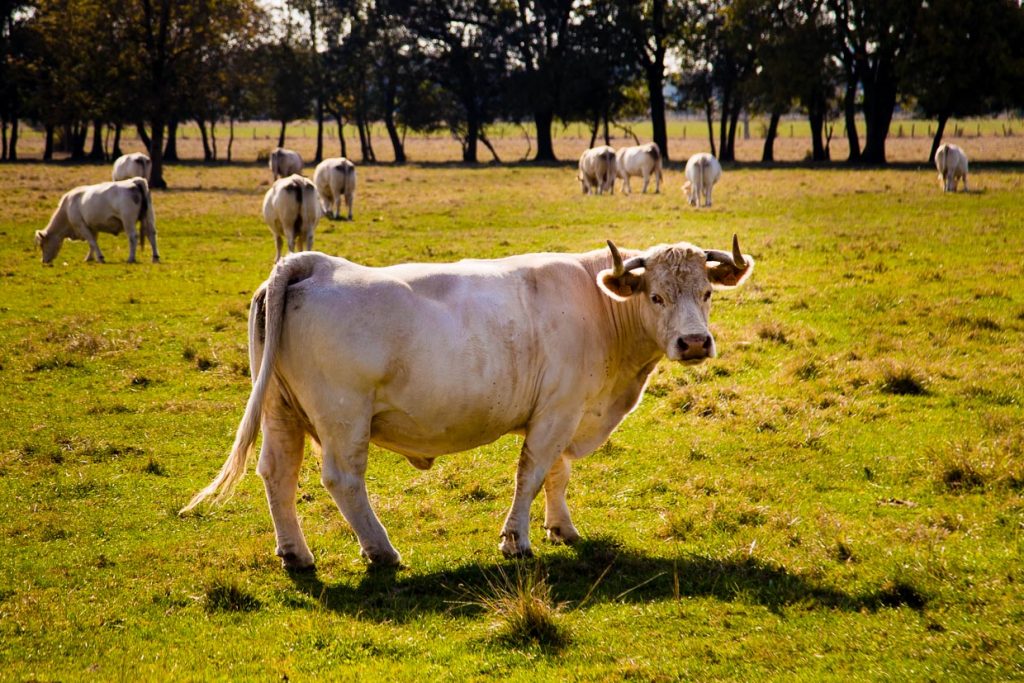
And what does this cow have to do with mustard? First, it is itself a specialty from Burgundy. White Charolais cattle are used to make the famous boeuf bourguignon, a stew of beef and Burgundy wine. Many other dishes with the meat of Charolais beef can be found on the menus of restaurants and bistros, Secondly, in the production of fine mustard, that is, the classic Dijon mustard and Burgundy mustard, mustard husks are produced as waste by sifting. These peels are still highly nutritious and are readily served to the white breed of cattle as appetite stimulating supplementary feed.
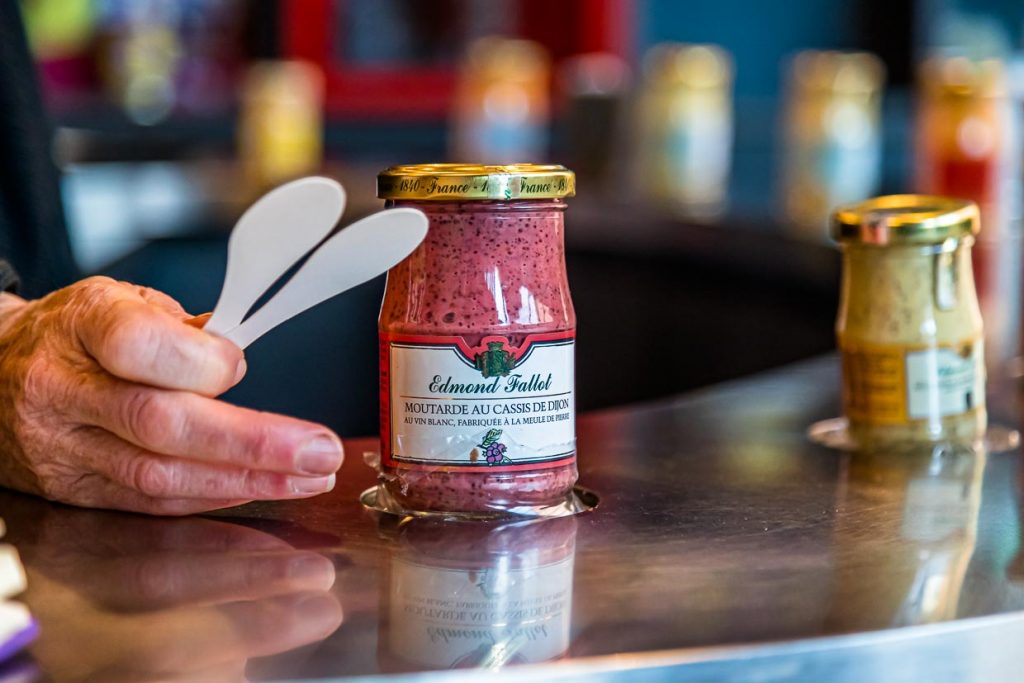
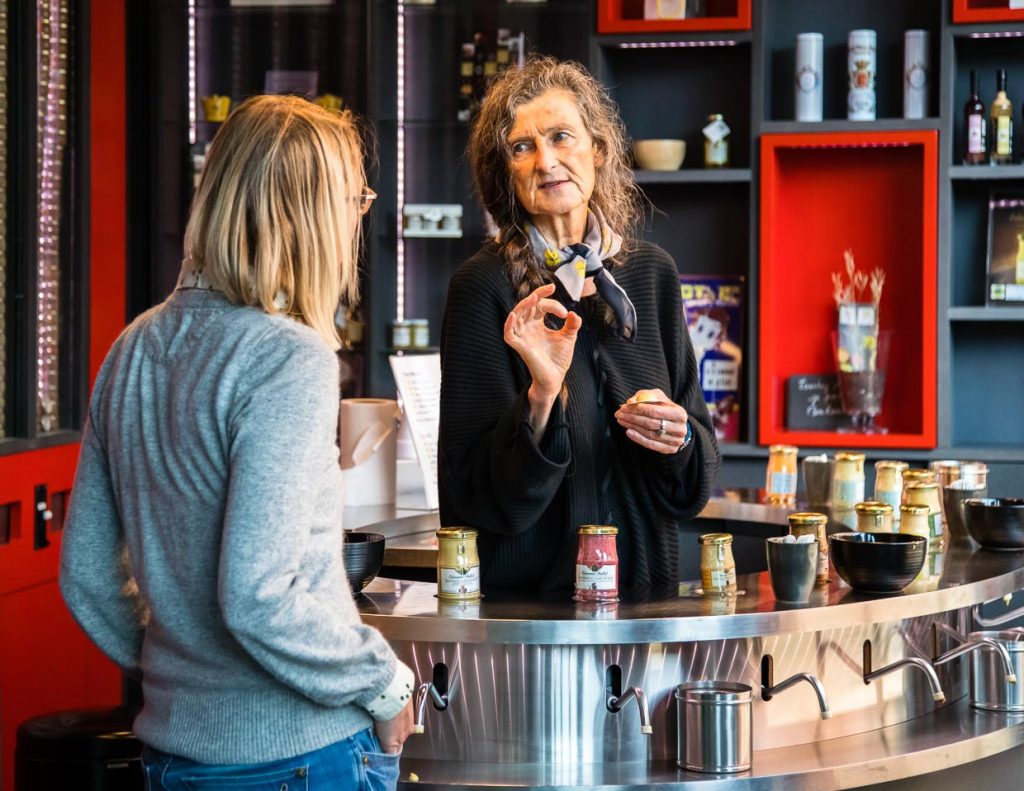
Eating well in Burgundy is not a big challenge. Everything is possible, from star restaurants to gastro bars with regional cuisine. For a snack before the next wine tasting, the Maison du Colombier in the center of Beaune is perfect. Chef Roland Chanliaud works a lot with regional products, a daily changing menu and likes to refer to his grandmother’s recipe templates.
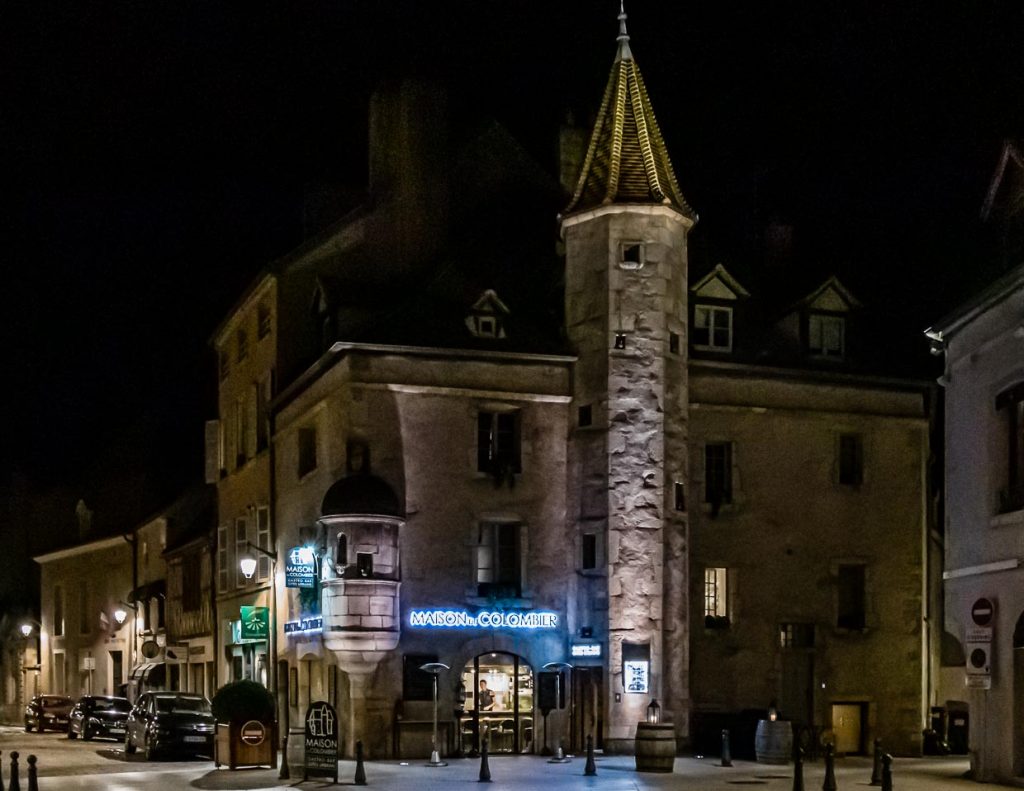
The research trip was supported by the local tourist office

